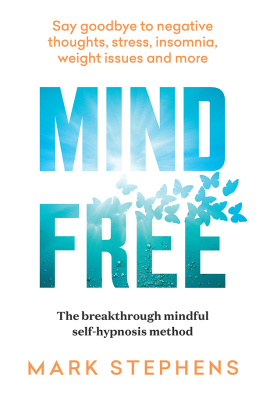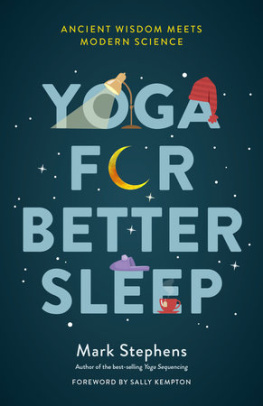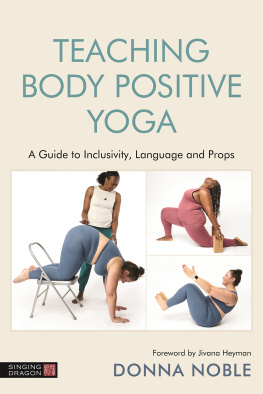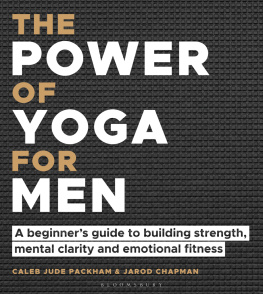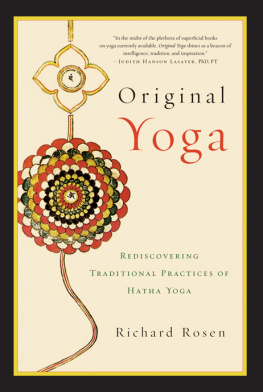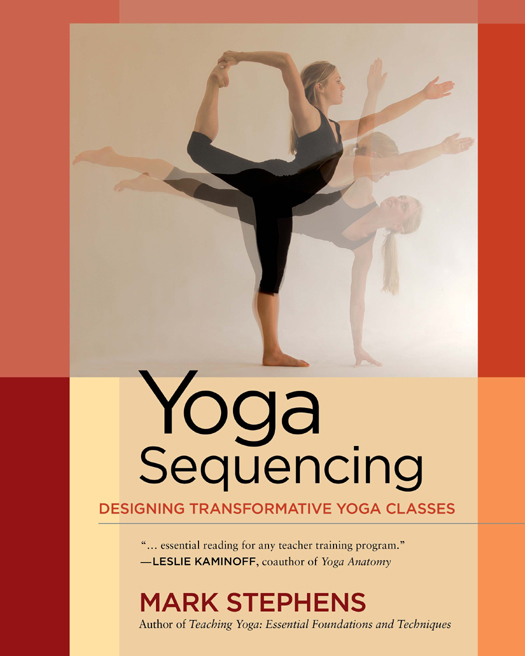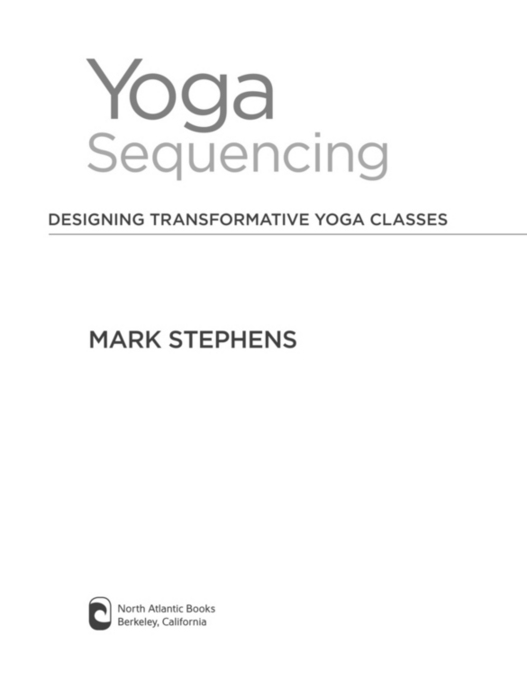Copyright 2012 by Mark Stephens. All rights reserved. No portion of this book, except for brief review, may be reproduced, stored in a retrieval system, or transmitted in any form or by any meanselectronic, mechanical, photocopying, recording, or otherwisewithout the written permission of the publisher. For information contact North Atlantic Books.
Published by
North Atlantic Books
P.O. Box 12327
Berkeley, California 94712
Cover photos by DiAnna Van Eycke
Cover photo collage by Paula Morrison
Cover design by Suzanne Albertson
Yoga Sequencing: Designing Transformative Yoga Classes is sponsored by the Society for the Study of Native Arts and Sciences, a nonprofit educational corporation whose goals are to develop an educational and cross-cultural perspective linking various scientific, social, and artistic fields; to nurture a holistic view of arts, sciences, humanities, and healing; and to publish and distribute literature on the relationship of mind, body, and nature.
North Atlantic Books publications are available through most bookstores. For further information, visit our website at www.northatlanticbooks.com or call 800-733-3000.
Library of Congress Cataloging-in-Publication Data
Stephens, Mark, 1958
Yoga sequencing: designing transformative yoga classes / Mark Stephens.
p. cm.
Includes bibliographical references.
Summary: Written for a broad yoga market that includes teachers, teacher trainers, studio owners, and students, Yoga Sequencing presents the essential principles of sequencing along with sixty-seven sequences of poses designed for a range of yoga student experience and offers a comprehensive resource for designing and refining yoga classes.Provided by publisher.
eISBN: 978-1-58394-527-8
1. Yoga. 2. YogaStudy and teaching. I. Title.
RA781.7.S7277 2012
613.7046dc23 2011048182
v3.1
To teachers and students on the path of sustainable,
transformational, and joyful yoga.
Contents
Tables
In Chapters
Basic Template for a Complete Arc Class
Asana Families
Basic Arc Template Applied to Different-Level Yoga Classes
Cueing Oppositional Actions
Roots and Extension
Deeper Refining Cues
Twelve Asanas in the Surya Namaskara Family
Sequencing Cues for Breath and Movement in Classical
Surya Namaskara
When and to Whom to Teach Pranayama
In Appendix D
Anusara SequenceBasic Template
Ashtanga Vinyasa Sequence (Primary Series)
Bikram SequenceBeginning Class
Iyengar SequenceBasic Class
Kripalu SequenceSun Flow
Power Yoga Sequence
Prana Flow Sequence for Natarajasana
Sivananda Sequence
White Lotus Sequence
Preface
Yoga is alive and well as a globalized practice for cultivating overall health and well-being. With tens of millions of people now doing yoga all over the world, the yoga teaching profession has finally begun to establish clearer and stronger standards of competence for teachers. As yoga teacher training programs proliferate, there is a growing need for training resources that support these standards. My previous book, Teaching Yoga: Essential Foundations and Techniques (2010), offers a comprehensive text for yoga teachers, covering the main subject areas in which teachers should have at least basic knowledge and skills. While many other books in the vast marketplace of yoga literature go into further depth on a variety of topics, including yoga philosophy, anatomy, and specific asana techniques, in-depth guidance on planning and sequencing classes is largely nonexistent.
Countless yoga teachers and teacher trainers have expressed the need for comprehensive guidance on designing yoga classes, inspiring me the write this book. While it is easy to find published sequences for a variety of yoga styles or for exploring some specific asanas, the essential missing ingredient for crafting yoga classes is a thorough resource covering the principles and methods for designing sequences for a variety of levels, conditions, and settings. This book is an attempt to offer that resource to the yoga community.
After completing yoga teacher training in 1995, I started teaching public classes at Malibu Yoga and soon thereafter at the original Yoga Works in Santa Monica, California. A couple of years into teaching, I founded the Yoga Inside Foundation along with several friends to establish ongoing yoga programs in alternative settings across North America. Soon we were teaching in prisons, juvenile institutions, drug rehabilitation centers, mental health treatment facilities, and schools. Our collective experience revealed that the yoga sequencing concepts we learned in teacher training and refined in regular public classes were very limited and often left us ill-prepared for working with the more diverse student needs and interests we encountered through Yoga Inside. This led to deeper reflection on how to obtain or develop that preparation, which in turn led to deeper study of the elements of asana, pranayama, and meditation. The insights gained through this experience soon informed not only our service work in alternative settings but how to approach yoga sequencing in all settings, including regular public yoga classes offered in yoga studios and fitness centers as well as at yoga institutes and conferences. Many more years of practice, deep study, observation, and experimentation led to further refinement of the principles and techniques for planning and sequencing yoga classes. This book is the culmination of that process.
My personal yoga practice became consistent just over twenty years ago after I met Erich Schiffmann, who taught me the method of being guided from within that he learned from Joel Kramer. Over the years I dove deeply into Ashtanga Vinyasa, took innumerable workshops with brilliantly insightful Iyengar teachers, and opened to the effusive spirit of Vinyasa Flow and the transformative potential of tantra; I also came to appreciate the refined insights of those working in the field of yoga therapy and those who draw from deep knowledge of functional anatomy, biomechanics, and kinesiology in making yoga accessible and sustainable for all who choose to do it. Amid it all, the intuitive yoga sensibilities of Erich Schiffmann and Joel Kramer are still resonating with me, even as I design and teach yoga to classrooms of yoga students.
The apparent contradiction between planned classes and intuitive practice unravels when we appreciate that students benefit from learning principles and techniques of practice in a way that makes it easier and more natural for them to discover and honor the best teacher they will ever have, the one dancing inside their bodymind to the rhythms of the breath and the beats of the heart. What I offer here is in the spirit of teaching in a way that empowers students to ultimately become their own teacher, intelligently guided from within.
Everything in this book has benefited from the lively exchanges over the years among participants in my Art and Science of Yoga Sequencing workshops that are required in my yoga teacher certification program. Hundreds of teachers-in-training along with experienced teachers have explored, discussed, debated, and shared about yoga sequencing with one another in these intensives; I have done my best to listen and learn from each and every one of them. Their contributions are embedded in every word printed on these pages, for which I take sole responsibility while honoring the gift of their wide-ranging insights.


